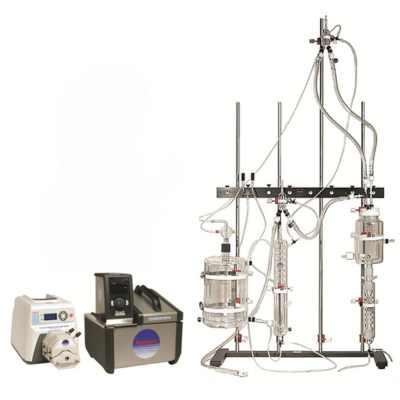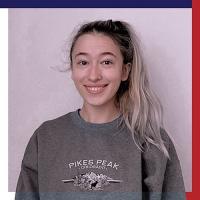Meet Dr. Lei Fan and learn about her experience receiving onsite training for the Working Heart Apparatus

We spoke with Dr. Lei Fan, Director of The FAN Lab and Assistant Professor in the Joint Department of Biomedical Engineering at Marquette University and the Medical College of Wisconsin, regarding the Working Heart Apparatus she utilizes in her lab for cardiovascular research. In our discussions, Dr. Fan explains why she opted to receive onsite training and installation for the set-up. Read on to learn how this training helped to instill confidence and efficiency within her lab.
Dr. Lei Fan is an esteemed faculty member in the Joint Department of Biomedical Engineering at Marquette University (MU) and the Medical College of Wisconsin (MCW). Additionally, she serves as the Director for The FAN Lab, where she enjoys integrating computational and experimental approaches to study cardiovascular diseases.
“We apply the data to specific computational models and frameworks to understand the mechanisms of cardiovascular diseases. Our work can also help to develop and optimize clinical therapies or medical devices, such as a left ventricular assistive device.”
The integration of these approaches provides Dr. Fan deeper insights into the complexities of the cardiovascular system and helps to “bridge the gap between fundamental sciences and the translational applications in a clinical setting.”
“Mostly I’m focused on the job of the cardiac coronary interactions in cardiovascular disease. It’s a really complex physiological system, it’s difficult for us to explain the effects of each confounding factor on the heart function or on coronary perfusion from pure clinical or experimental studies. I believe my research, by integrating the experimental and computational work, could provide some insight into the mechanisms of cardiovascular disease.”
Integration of Approaches and Utilizing the Working Heart Apparatus
Dr. Fan's journey into cardiovascular research started with a foundation built at Durham University, where she received her Ph.D. in Computational Mechanics. During her postdoctoral training at Michigan State University, she was able to expand upon this foundation of computational modeling for the cardiovascular system.
Today, Dr. Fan serves as the director of The FAN Lab and utilizes a Working Heart Apparatus paired with the MPVS-Ultra Single Segment Pressure-Volume Unit from Millar to collect a variety of signals for her work, including:
- Perfusion pressure
- Heart rate
- ECG
- Temperature
- Diastolic and systolic pressure

Her set-up includes a PowerLab C system and LabChart, as well as several smaller pieces of equipment like the temperature probe and pacing electrodes, giving her the flexibility and versatility she needs to acquire different data sets. “Even during the experiments we can easily convert to different modes to acquire different sets of data. That can really help us to improve our efficiency.”
“In the future we are also interested in integrating more equipment into the working heart apparatus, such as the flow meter. With that we could also measure the coronary perfusion and coronary flow rate (or flow velocity).”
Benefits of Onsite Training and Installation
While Dr. Fan enjoys using her current set-up and values its ability to integrate, she was a bit overwhelmed upon receiving the shipment in her lab: “We had no idea where we should start!”
Fortunately, Dr. Fan and the members of her lab did not have to tackle the set-up on their own. During the process of purchasing, she made the decision to receive onsite training and installation from ADInstruments Training and Technical Support Manager, David Riem.
“I enjoy working with equipment, but I hadn't had the experience of setting it up from scratch. It was important to us to have the professional service to help with the installation and training.”
“I can honestly tell you we enjoyed working with David. He demonstrated the connections between the equipment, PowerLab, and LabChart. He also helped us to set-up an operation template on the computer. We did some tests to collect the pressure data and see how it was recording within LabChart. Overall it was a wonderful experience with the one-day training, for myself and also my lab members. We really enjoyed working with him and we learned quite a lot.”
Improved Confidence and Efficiency
Learning how to assemble the set-up also helped to provide Dr. Fan and her team foundational knowledge for troubleshooting, which was extremely important to them.
“It provided us with more confidence in using the set-up, as well as efficiency in the lab. Especially because there are some new features compared to my previous set-up, it was more efficient to learn those new features by having David demonstrate them. It showed us how the new set-up compares to the previous version and reinforced why we like this version and why we chose it.”
The entire process, from purchasing to installation and training, was smooth from start to finish for Dr. Fan. She appreciates having confidence in the support that she knows she can receive from the ADI team. “ If we plan to expose a new piece of equipment that we are not 100% familiar with, it helps a lot that someone can provide us with some suggestions or technical support.”
We would like to thank Dr. Lei Fan for taking the time to speak with us about her research and her experience receiving training on her Working Heart and PV system. We wish her good luck and hope to continue supporting her incredible research!

Lei Fan, Ph.D.
Dr. Lei Fan is an Assistant Professor for the The Marquette University and Medical College of Wisconsin Joint Department of Biomedical Engineering and Director of The FAN Lab. Driven by her passion for integrating experimental and computational approaches in cardiovascular research, Dr. Lei Fan hopes to contribute to our greater understanding of cardiovascular diseases and ultimately improve the well-being of others.
